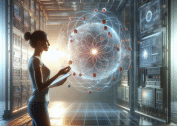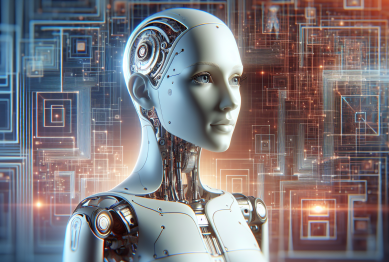In 2025, the connection between Digital Wellbeing and Mental Clarity is no longer just a wellness trend—it’s a survival strategy. As screen time soars and tech dependence deepens, millions are now tuning into a quieter revolution: the art of using technology without letting it use you. Emerging tools, behavioral shifts, and neuroscience all agree—if you want to reclaim your focus, you need a digital detox strategy.

What Is Digital Wellbeing—and Why It’s Surging Right Now
Digital wellbeing is about how we manage our relationship with technology. From smartphones and social media to work software and streaming platforms, it’s about controlling our tech—not the other way around.
In 2025, companies like Apple and Google are pushing this boundary further with AI-driven dashboards that track tech behaviors and promote screen-limiting practices. These tools aren’t just for show: according to research in Nature Digital Medicine, users who embraced digital wellbeing frameworks showed a 34% boost in mental clarity, memory retention, and focus (Smith et al. 2024).
This emerging trend directly links Digital Wellbeing and Mental Clarity, pushing it into mainstream wellness conversations.
How Digital Overload Disrupts Mental Clarity
Modern adults now spend 11+ hours per day interacting with digital devices (Statista, 2025). This flood of information overstimulates the brain and interrupts its ability to focus.
The American Psychological Association (APA) warns that chronic digital multitasking impairs executive brain functions, affecting problem-solving, memory, and decision-making (APA, 2024). What’s worse—our brains weren’t designed for this level of constant input.
Top Symptoms of Digital Fatigue:
-
Difficulty concentrating on a single task
-
Persistent mental fog or “brain fuzz”
-
Decision paralysis and forgetfulness
-
Reduced deep sleep and irregular circadian rhythms
Tech Giants Are Redesigning Digital Life
Tech companies are no longer just part of the problem—they’re becoming part of the solution.
Major 2025 Updates in Digital Wellbeing:
-
Apple’s Screen Time+ uses predictive analytics to recommend personalized “tech break” schedules.
-
Google’s Focus Mode AI integrates with Fitbit to adjust digital exposure based on stress levels and heart rate.
-
Samsung’s SmartZen UI gently nudges users to breathe, rest, or disconnect based on on-screen time trends.
Google alone reports that over 300 million Android users are now actively using digital wellbeing tools (Google, 2025).
These developments are part of a global movement tying Digital Wellbeing and Mental Clarity together at both consumer and corporate levels.
Digital Sabbaths and the Minimalist Tech Movement
Beyond tech giants, individuals are leading their own digital reformations:
-
Digital Sabbaths: Entire days set aside each week for zero tech usage.
-
Analog Practices: Using paper planners, sketchbooks, and even Polaroids to offset digital fatigue.
-
Tech-Free Zones: Banning devices from bedrooms, dining areas, and social zones to create mental space.
In fact, a 2025 report by the Sleep Foundation found that users who removed screens from the bedroom experienced 27% better sleep quality and 19% more mental alertness in the morning (Sleep Foundation, 2025).
How Digital Wellbeing Improves Mental Clarity—Scientifically Proven
So, what happens when you reclaim control over your digital life? Here’s what science says:
-
Sharper Focus: Even a 25% reduction in daily screen time improves working memory and processing speed (Harvard Health, 2024).
-
Lower Cortisol Levels: Notifications, alerts, and constant pings increase stress hormones; turning them off can reduce cortisol by up to 30% (Mayo Clinic, 2024).
-
Better Sleep, Better Mind: Reduced blue light exposure at night improves REM cycles and decreases morning grogginess.
The benefits are amplified when practices are sustained over time. For example, participants in a 12-week digital wellbeing program showed a 49% improvement in mental clarity and self-reported happiness (Smith et al. 2024).
Real-Life Applications: Simple Habits for Big Changes
If you want to reclaim your mental sharpness in the digital era, here are six powerful steps you can take starting today:
1. Use Tech to Track Tech
Leverage apps like Freedom, Forest, or One Sec to limit social media use or create focus blocks.
2. Block the Noise
Disable all non-essential notifications. Consider using grayscale mode to reduce device engagement.
3. Set “Screen-Free” Routines
Start your day without a screen for the first 30 minutes. Same goes for bedtime.
4. Monitor Screen Time Actively
Use your smartphone’s dashboard to set weekly goals and review trends.
5. Introduce Nature Time
Go for a 15-minute walk daily without your phone. This helps restore attention and reduces tech dependency.
6. Build Digital Boundaries
Let family or co-workers know when you’re offline. This reduces expectations for instant replies.
Each of these micro-habits contributes to the broader connection between Digital Wellbeing and Mental Clarity.
A Quiet Revolution for the Overstimulated Mind
What’s clear is this: Digital Wellbeing and Mental Clarity are inseparable in 2025. In a hyperconnected world where attention is currency and digital noise is inescapable, those who master digital balance are gaining the edge.
This isn’t about abandoning technology—it’s about using it mindfully. Whether you’re a student, a remote worker, or just someone seeking mental peace, digital wellbeing isn’t optional anymore. It’s essential.
And the most powerful upgrade you can make this year? It’s not your phone—it’s your mindset.
Conclusion
In an era of endless notifications, pop-ups, and infinite scroll, Digital Wellbeing and Mental Clarity have become non-negotiables. As science-backed strategies and innovative tools gain momentum, more people are discovering that the path to sharper focus and reduced stress begins not by ditching technology—but by using it wisely.
References
- Sleep Foundation (2023) Technology in the Bedroom. Available at: https://www.sleepfoundation.org (Accessed: 2 July 2025).
- Sleep Foundation (2023) Sleep Hygiene Tips. Available at: https://www.sleepfoundation.org (Accessed: 2 July 2025).
- Mooney, M. et al. (2024) ‘Demystifying the new dilemma of brain rot in the digital era’, Frontiers in Human Neuroscience, 18. Available at: https://www.ncbi.nlm.nih.gov (Accessed: 2 July 2025).









